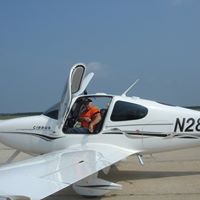Richard P Barrette
age ~78
from Davenport, FL
- Also known as:
-
- Richard Paul Barrette
- Richard P Barrett
- Robert Barrette
- Richar Barrette
- Barrette Richar
- Phone and address:
-
441 Dolcetto Dr, Davenport, FL 33897
8636047130
Richard Barrette Phones & Addresses
- 441 Dolcetto Dr, Davenport, FL 33897 • 8636047130
- Lancaster, MA
- 46 Lake Sargent Dr, Leicester, MA 01524 • 5088921322 • 5088925387 • 5088925600
- Haines City, FL
- New Smyrna Beach, FL
- Worcester, MA
- Lake Wales, FL
- Winter Haven, FL
- 441 Dolcetto Dr, Davenport, FL 33897
Work
-
Position:Professional Specialty Occupations
Education
-
Degree:Associate degree or higher
Us Patents
-
Matchbook Covers
view source -
US Patent:40821820, Apr 4, 1978
-
Filed:Dec 20, 1976
-
Appl. No.:5/752401
-
Inventors:Richard P. Barrette - Lancaster MA
-
Assignee:Automated Molding Corporation - Westboro MA
-
International Classification:A24F 2700
-
US Classification:206107
-
Abstract:An organic plastic matchbook cover having continuous front, back and side walls, and that is closed at its bottom and generally open at its top. The walls and bottom define a generally wedge-shaped interior cavity having the size and shape necessary to receive a conventional paper matchbook therewithin. An opening is provided in the front wall of the cover in position to overlie the striking surface of the matchbook, and a second opening is provided in the back wall to permit a thumb or finger to engage the back of the matchbook. A holding tab projects from the top of the back wall partially across the top of the cover towards the front wall in position to overlie and engage the top of a matchbook positioned in the cavity, and a locking tab projects inwardly from each of the side walls.
-
Bundling Tie
view source -
US Patent:41387708, Feb 13, 1979
-
Filed:Apr 22, 1977
-
Appl. No.:5/790121
-
Inventors:Richard P. Barrette - Lancaster MA
John B. Glode - Acton MA
Richard P. Olsen - Acton MA -
Assignee:Electro-Ty, Inc. - Concord MA
-
International Classification:B65D 6300
-
US Classification:24 16PB
-
Abstract:An improved bundling tie is disclosed of the type having a relatively rigid head and an integrally attached strap having a series of ratchet teeth on its inner surface which engage another series of complementary ratchet teeth on a pawl member positioned within a transverse slot through the head.
-
Packaging Fastener
view source -
US Patent:44222173, Dec 27, 1983
-
Filed:Jul 2, 1981
-
Appl. No.:6/280116
-
Inventors:Richard P. Barrette - South Lancaster MA
-
International Classification:B65D 6300
B65D 6702 -
US Classification:24 16R
-
Abstract:A fastener for bundling wires or packaging other articles in which the ends of a smooth flexible plastic strap are inserted into parallel passageways through a plastic body and retained by locking ears extending into the passageways. An anchor member, formed from a single piece of spring sheet metal, includes a base portion, the two oppositely-extending locking ears and two intermediate oppositely-extending retaining ears that retain the anchor member within the body. The locking ears extend into the passageways to cinch the strap and prevent its being withdrawn. The outer ends of the locking ears are beveled to improve the holding power of the head. When the fastener has been applied to tie a bundle of articles, the forces operating on the fastener are in directions transverse to the axes of the passageways, thereby substantially increasing the holding power of the fastener. In another embodiment, only one passageway extends completely through the body, the other passageway being closed at one end and permanently retaining therein one end of a pre-cut plastic strap. The anchor member fastener is formed from a continuous sheet metal strip by a progressive die that forms and inserts the anchor member into the head where it is retained by the outward flexing of the retaining ears.
Name / Title
Company / Classification
Phones & Addresses
Owner, Architect
Richard Barrette Architect
Architectural Services · Architect
Architectural Services · Architect
1710 Lk Francis Dr, Apopka, FL 32712
1243 Wald Rd, Orlando, FL 32806
924 Brentwood Dr, Apopka, FL 32712
4078126246
1243 Wald Rd, Orlando, FL 32806
924 Brentwood Dr, Apopka, FL 32712
4078126246
President
ADVANCED CABLE ELECTRONICS CORP
PO Box 1291, Westborough, MA 01581
7 Magnolia Ave, Lancaster, MA 01523
7 Magnolia Ave, Lancaster, MA 01523
President
MOLDPRO INC
24 Kilby St, Worcester, MA 01613
8 Lee St, Lancaster, MA
8 Lee St, Lancaster, MA
President, Director
KYBAR ASSOCIATES, INC
Daytona Beach, FL 32115
3700 John Anderson Dr, Ormond Beach, FL
3700 John Anderson Dr, Ormond Beach, FL
License Records
Richard P Barrette
Address:
Davenport, FL 33897
License #:
9019174 - Expired
Issued Date:
Oct 24, 1996
Expiration Date:
Jan 17, 2011
Type:
Broker
Richard P Barrette
Address:
Lancaster, MA 01523
License #:
9002605 - Expired
Issued Date:
Apr 14, 1993
Expiration Date:
Oct 24, 1996
Type:
Salesperson
Richard Paul Barrette
Address:
441 Dolcetto Dr, Davenport, FL 33897
License #:
BK3010695 - Active
Category:
Real Estate
Issued Date:
Jun 12, 2001
Effective Date:
Jun 26, 2001
Expiration Date:
Mar 31, 2019
Type:
Broker
Organization:
T\A BEST BUY REAL ESTATE
Resumes

Richard Barrette
view source
Richard Barrette
view source
Richard Barrette
view sourceLocation:
United States
Youtube
Googleplus

Richard Barrette

Richard Barrette
Flickr

Richard Barrette
view source
Richard Barrette
view source
Richard Barrette
view source
Bryan Richard Barrette
view source
Richard Barrette
view source
Richard Barrette
view source
Richard Barrette
view source
Richard Barrette
view sourceClassmates

Richard Barrette | Sackvi...
view source
Georges P. Vanier High Sc...
view sourceGraduates:
Chantal Villeneuve (1991-1995),
Nathalie Jolette (1993-1997),
Stephane Doiron (1997-2001),
Richard Barrette (1990-1994)
Nathalie Jolette (1993-1997),
Stephane Doiron (1997-2001),
Richard Barrette (1990-1994)
Get Report for Richard P Barrette from Davenport, FL, age ~78













